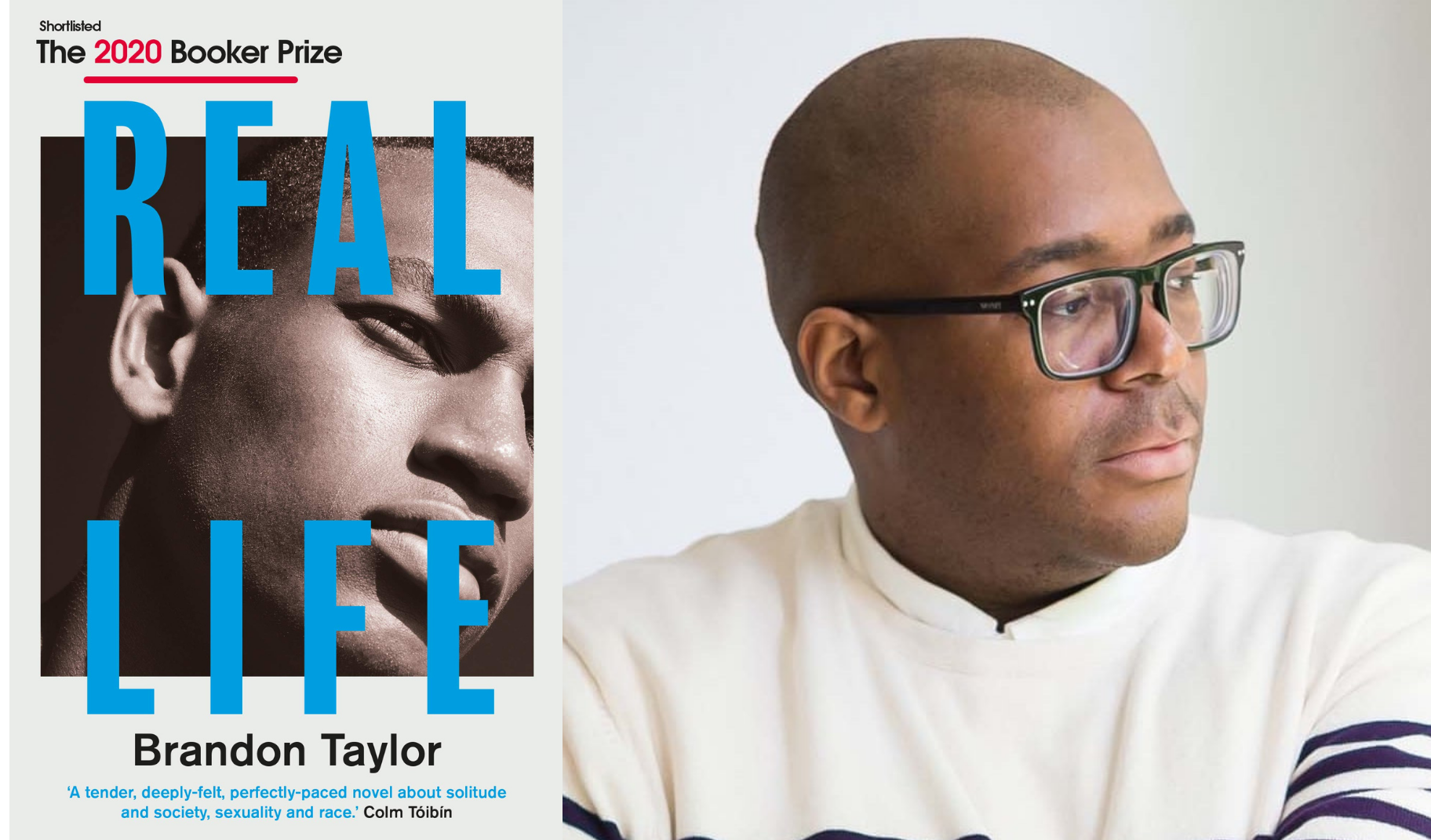So, for book lovers far and wide we are delighted to introduce the first in a series of Science Museum Book Club blog posts.
You can let us know what you think by using #SMBookClub on Twitter and Instagram.
Glyn’s first entry is Real Life by Brandon Taylor.

TITLE: Real Life
Author: Brandon Taylor
Publisher: Daunt Books, 2020
page count: 336
The Booker Prize-nominated Real Life is a campus novel set over a long weekend in the American mid-west. It follows Wallace, a biochemistry PhD student, and his interactions with his fellow doctoral students and supervisors.
Although this is a debut novel, Taylor (who is a former biochemist himself – drawing on his own experience at University) imbues the book with turns of phrase which are beautiful in their precision and imagery, whether it’s describing the vast lake which dominates the campus, the life cycle of the nematode worms on Wallace’s petri dishes, or some other element of lab work.
‘…she plates thousands of tiny cultures, clumps of greyish cells that grow and divide, or else die, in pools of brilliant red media. Wallace once found her there, like stumbling upon a spirit in a myth. She had been dabbing tears from her eyes with her bare forearm, dabbing and pipetting simultaneously in one unbroken motion. She had a heavy scent to her, like salt water.’ (p. 63)

Researching and writing a PhD thesis is a stressful and isolating experience in any circumstances: imposter syndrome is rife (the often unspoken and erroneous feeling that you aren’t good enough to complete your studies and sooner or later someone is going to find that out), and I don’t know of any recent students that have not experienced some level of mental health crisis.
For Wallace, those feelings are compounded by the additional isolation which he feels as a result of who he is. Wallace is a queer black man in a particularly white part of the United States. This means that the already difficult pressures of social situations, work-place politics, and negotiating with your peers and seniors carry with them the added barbs of casual (or in some cases, overt) racism and homophobia.
Normal postgraduate anxieties and the recent death of his father dredging up memories and feelings of his home in Alabama, a lifestyle and circumstances he is not eager to have to return to, Wallace is already conflicted about whether a PhD in biochemistry is really for him.
Taylor’s narrative clings tightly to Wallace’s train of thought as he grapples with these feelings, difficult enough for anyone, whilst simultaneously being made to feel that he doesn’t fit into his lab because of his skin colour. When his supervisor or fellow students question whether he belongs there, and after one of his experiments fails under potentially suspicious circumstances, he cannot know if they are articulating his genuine self-doubt or their own racist presumptions.
For example, early on Wallace describes the makeup of his academic cohort:
‘Their class had been the first small one in quite some time, and the first in more than three decades to include a black person. In his less generous moments, Wallace thought these two things related, that a narrowing, a reduction in the number of applicants, had made his admission possible.’ (p. 8)
Reading this book in the context of this blogpost raises a lot of questions about who we encourage to pursue scientific fields. 7.6% of UK domiciled students enrolled at UK universities are black, roughly in line with the population figures for University-age students, and entry levels for STEM subjects are similarly proportional. However black students are more likely to enroll at universities with focuses on teaching rather than the more research-led Russell Group institutions which are normally considered more prestigious.
Partly as a result of this, black students are almost 50% less likely to advance to studying for a postgraduate research qualification such as a PhD within 5 years of graduation than their white peers.
However, Real Life also made me think about the other side of the equation: the white students and professors who are either institutionally or openly racist in their interactions with Wallace, why is the University system accommodating them without hesitation?
Away from the science and studies (although as any PhD student will tell you, it is always lurking in the background of your mind), Wallace’s weekend is spent negotiating social situations which are similarly tinged by the preconceived notions of race, class, and sexuality. The novel’s writing is sensual, provocative and at times troubling as Wallace embarks on a new sexual (and potentially, romantic) relationship with one of his peers and wrestles his loneliness even whilst surrounded by people who consider themselves his friends or in the arms of a lover.
This is a novel which, as the title suggests, is very true to the everyday experience of many people in the scientific community. It is also a novel about how scary academic life can be. Much like the work of a writer like Sally Rooney, it is also about how isolating it can be to be young, and about the challenges of love. It is a book that feels thoroughly American yet also universal. It is a novel about science, but it is also a mirror on society.
For me, it is a book that brought up a lot of emotions and gave me plenty to think about. It has some beautiful moments that charmed me with their prose and others that made me uncomfortable but that I will be thinking about for years to come. I would love to hear what you thought of it too.
Whether you’re an occasional reader or an avid bookworm, we would love to hear your thoughts on the text, you can reach us online by using #SMBookClub.
